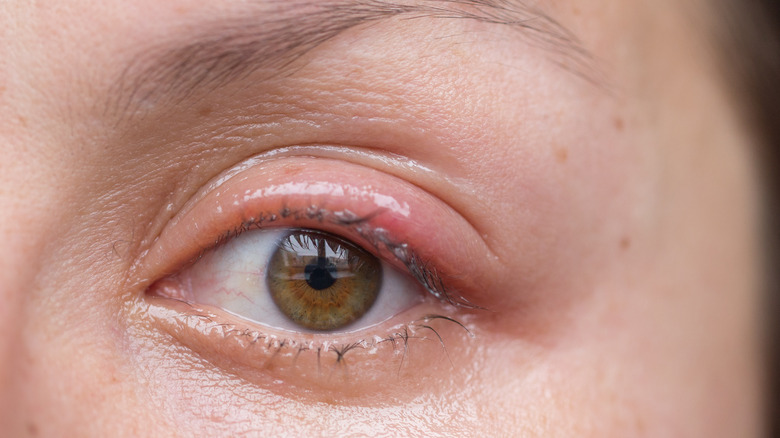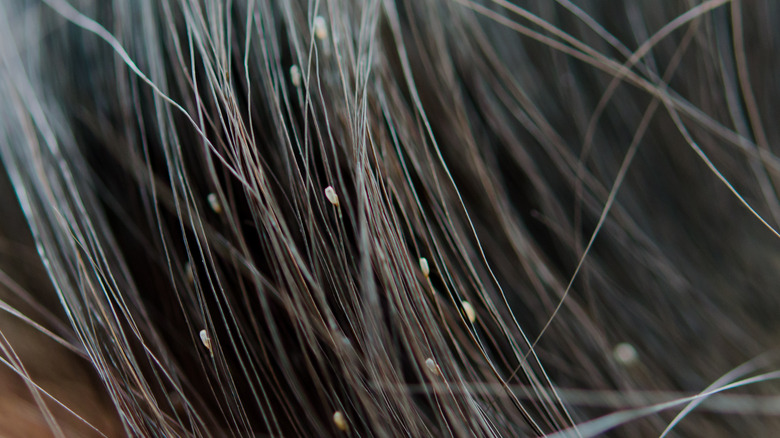Can You Get Lice On Your Eyelashes?
You may be familiar with what lice are, or you simply may have only heard the term. If you have insects living on you, shouldn't you be able to tell? Turns out, they may not be so easy to spot.
Lice are very tiny insects that feed on human blood (via Mayo Clinic). They attach to the hair of the body and then travel to the skin to bite and feed. When you have lice, the usual symptoms are itching, tickling, bite marks, sores, and visible lice or eggs on clothes, hair, or skin. They are so small they can be commonly mistaken for dirt, dandruff, or residue from hair products.
According to WebMD, there are three stages in the life of lice that span a total of thirty-five days. The life cycle begins with nits, the pinhead-sized eggs of lice attached to the hair. The second stage is nymphs (smaller adults). The final stage is an adult usually the size of a sesame seed and able to produce eggs.
These different stages appear in three general areas and therefore are grouped into three main types. Head lice are found on the scalp, pubic lice are found in areas such as the groin, and body lice are often found living on bedding and clothing and move to the skin. Lice don't have any wings and can only crawl, so they are usually transferred from direct contact with someone who has them. Are lice also found in other areas, like eyelashes?
Lice can spread to other areas of the body
According to Cleveland Clinic, lice infestations are common and affect 6 to 12 million people yearly. While lice may be common, they may not always be easy to identify. In a 2009 study, a woman with itching in both eyes who was diagnosed with lid eczema or blepharitis was examined. Observations revealed that she instead had many lice buried in her eyelids and nits clinging to her eyelashes. Interestingly, the lice there turned out to be pubic lice transferred likely by hand contact to the genital area, rather than head lice. The study concluded that this transfer is the way most eyelash lice occur.
Multiple treatments for lice are available such as trimming hair, mechanical removal of the lice or nits, or using various gels, drops, shampoos, and ointments to eliminate them. In this study, the infestation was cleared up using pilocarpine 4% drops.
Similarly, in a 2015 study, a man with itchy and irritated eyes was examined for diagnosis. Observers found his eyelashes to be infested with lice and nits. While he suffered from blepharoconjunctivitis, it was actually from the lice rather than the more common bacterial, viral or allergic causes of the condition. His lice were also confirmed to have been transferred from the pubic area to his eyes. While the man was successfully treated, his study demonstrates the importance of getting checked — as lice can travel to the eyes and be easily misdiagnosed.


